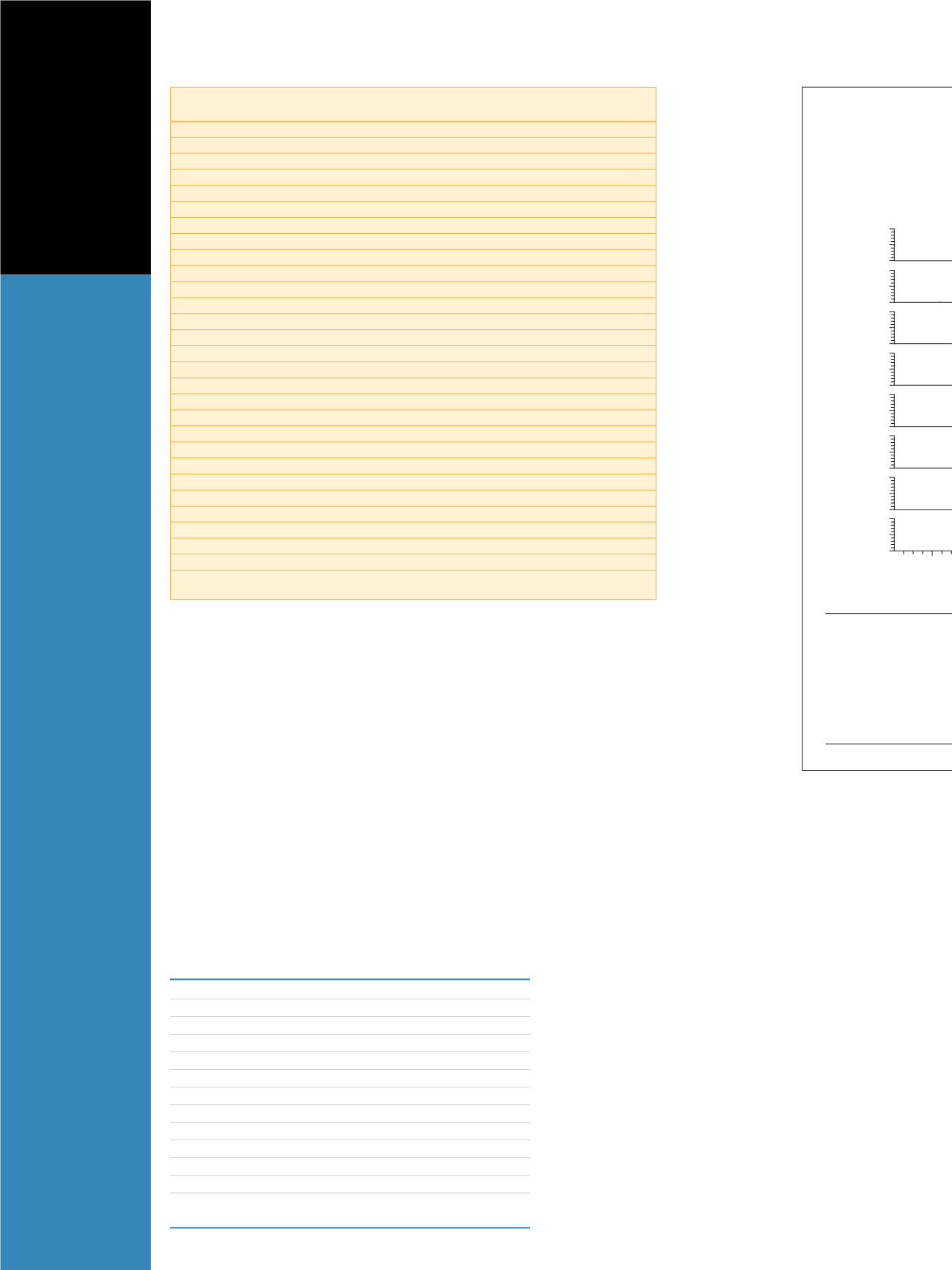

BDB
N
P
P
Benzocaine
N
P
P
Benzoylecgonine
P
P
P
Betaxolol
P
P
P
Bisacodyl
P
P
P
Bisoprolol
P
P
P
Bromazepam
N
P
P
Brompheniramine
N
P
P
Bufotenine
N
P
P
Bupivocaine
P
P
P
Buprenorphine
P
P
P
Bupropion
N
P
P
Buspirone
P
P
P
Butorphanol
P
P
P
Cannabidol
N
P
P
Cannabinol
N
P
P
Captopril
N
N
>1000
Estazolam
N
P
P
Carbamazepine
P
P
P
Carbinoxamine
P
P
P
Carisoprodol
N
P
P
Cathinone
N
N
>1000
Chlordiazepoxide
N
P
P
Chloroquine
N
P
P
Chlorpheniramine
P
P
P
Chlorpromazine
N
P
P
Chlorprotixene
P
P
P
Clozapine N-Oxide
N
P
P
All barbiturates require an APCI source for detection. P=Drug present.
N
=Drug not present.
LXQ – 13 min method
Concentration Tested (ng/mL)
Compound
10
100
1000
Table 3. Results for spiked plasma samples in toxicology screen by LC-MS/MS
Raw File Name: C:\Documents and
Config File Name: C:\Xcalibur\exa
Sample Name:
Laboratory: ChemLab
Acquistion Start Time: 2/13/2007 1:
Peak 1
Peak 2
Peak 3
Peak 4
Peak 5
Peak 6
Peak 7
Peak 8
2
0
50
100
0
50
100
0
50
100
0
50
100
0
50
100
0
50
100
0
50
100
0
50
100
2.42
2.
Peak
Number
Compound Name
1 Bupropion
2 EDDP
3 Venlafaxine
4 Methadone
5 Chlorpromazine-D3
6 Prazepam-D5
7 Haloperidol-D4
8 Quetiapine
Figure 3: The ToxID Summary R
LC-MS
LC-UV
Immunoassay
Nortriptyline
Nortriptyline
Barbiturates
Amitriptyline
Amitriptyline
Benzodiazepines
Benzoylecgonine
Benzoylecgonine
Cocaine
Cocaine
Cocaine
Opiates
Norcocaethylene
Cocaethylene
THC
Norbenzoylecgonine
-
-
Morphine
-
-
Norcocaine
-
-
Quinidine/Quinine
-
-
Hydroxyzine
-
-
Noskapine
-
-
Diltiazem
-
-
Morphine-3-beta-
Glucuronide
-
-
Table 4. Urine sample analyzed with LC-MS/MS, LC-UV and Immunoassay methods
For selected sets of compounds the method was also
prequalified by processing and analyzing spiked plasma
samples. Table 3 lists the concentration at which each
analyte in the toxicology screen for plasma samples is
identified. In general, detection limits for urine and plasma
are comparable.
In addition, the assay performance was verified by
analyzing patient urine samples obtained from the Johns
Hopkins University Hospital Clinical Laboratory and data
were compared to the results from established LC-UV and
immunoassay analytical techniques. The result is shown in
Table 4. The LC-MS/MS method has consistently
identified more analytes present in the sample than either
LC-UV or immunoassays.



















